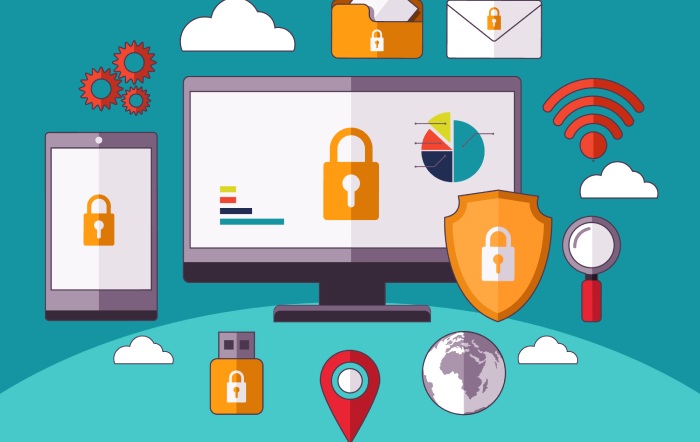A tremendous evolution can be seen in the internet threat landscape in recent years. Cyber-attacks have become more sophisticated to easily infiltrate an email infrastructure and cripple any organization’s business operations in seconds. The latest Gartner report points out that attacks relating to business email compromise (BEC) will double in number every year (to over $5 billion) by 2023, resulting in substantial financial losses to organizations.
Besides monetary losses, email infiltrations can also paralyze employee productivity and cause severe damage to business reputation and trust issues in clients. Therefore, choosing an efficient email security service provider that can provide a multi-layered email security solution and pro-active security support is inevitable to mitigate such losses.
Choosing The Right Email Security Service Provider
Here are a few essential aspects one should consider while evaluating an email security service provider to find the one that is best suitable for the organization:
Inbound Email Control
It includes the essential functions that every email security service provider must offer. It consists of basic controls and security checks relating to inbound emails, such as:
- Spam detection
- Bulk and adult messages check
- Validation of the sender as well as the recipient
- Volume and connection rate control
- File type control
In addition to this, it must also empower the end-user to:
- Block
- Allow
- Whitelist and blacklist
- Report any messages
Threat Protection
One of the most vital things that decide the success of an email security service provider is the protection it provides from the latest cyber threats such as:
- Impersonation attacks like phishing, spear phishing, spoofing, and other social engineering attacks
- Latest and known viruses and malware
- Malicious URLs and attachments
- Hybrid threats consisting of URLs inside the attachments leading to infected files or sites
Detection Of Threat And Response Plan
An email security solution must be efficient enough to detect threats and respond accordingly. One should choose the solution whose vendor provides periodic threat intel updates. Furthermore, the tool must allow the users to integrate other threat-related information they receive from various sources, like open-source threat intelligence or digital risk provider.
The threat detection process should also include immediate notifications on finding any malicious or weaponized email along with the ability to respond automatically or manually, as per the user’s instructions. The solution should provide manual as well as automatic search-and-destroy capabilities to support the organization’s threat-hunting program. Additionally, malware protection and anti-phishing services are also necessary for complete phishing protection and ransomware protection.
Internal Threat Check And Outbound Email Control
There are many instances where organizations have incurred huge losses and damages due to insider threats, regardless of whether it is done by the insider mistakenly or with malicious intent.
Hence, the organization has to thoroughly analyze the outbound SMTP or emails to protect against insider threats. It means that an effective email security service provider must conduct a thorough analysis of internal emails for spam, unwanted or inappropriate content, and confidential information sharing. The email security platform should also detect and notify the user of any activities relating to sending large volumes of emails and bulk messages; it could be an indicator of data compromise.
Data Loss Protection (DLP) For Outbound Emails Combined With Encryption
Many advanced email security platforms offer DLP strategies for outbound emails combined with encryption. DLP strategies help ensure that no one can send emails containing confidential and sensitive information until proper encryption is placed on them. Such methods can include the use of:
- Smart identifiers for different data types such as personal, financial, and banking information
- Optical character recognition (OCR) for analyzing sensitive content
- Exact data matching (EDM) to treat specific information differently
- Volume control for the detection of compromised accounts or insider threats
Encryption is an essential part of email security. For effectual encryption, there should be both push encryption as well as pull encryption. Additionally, one has to employ Transport Layer Security (TLS) on every email sent. Push encryption works by saving the email containing sensitive information as a file. It then encrypts the file and sends it as an attachment to the email, which has instructions for access. In pull encryption, the email is directed to a secure inbox where the recipient can view the message, authenticate it, and send a reply. Some email security providers even offer post-delivery controls, such as:
- Specifying access duration
- Message actions such as download, forward, etc.
- Ability to disable access to a message or retract it
Seamless Implementation
A good email security solution can be easily, quickly, and seamlessly integrated into the existing email infrastructure of the organization. It will also be managed remotely by the trained personnel for round-the-clock protection against threats.
Scalable And Customizable
Choose a solution that can meet the current size of the business and adapt and accommodate the expansion and growth of the organization. One should go for an email security platform that can be conveniently customized and scaled to effectively and efficiently handle the various future transformations of the organization.
Final Words
It can be daunting to evaluate many email security service providers to choose the ideal one for an organization. Nevertheless, defining essential criteria for the analysis of the email security solution can help ease the evaluation process. There is no such product that can suit the needs of every organization. Each organization has its email infrastructure, IT environment, security needs, and different threats to handle. By considering the critical points discussed above, you can create your comprehensive evaluation criteria and choose an email security service provider that fits your organization’s requirements.


